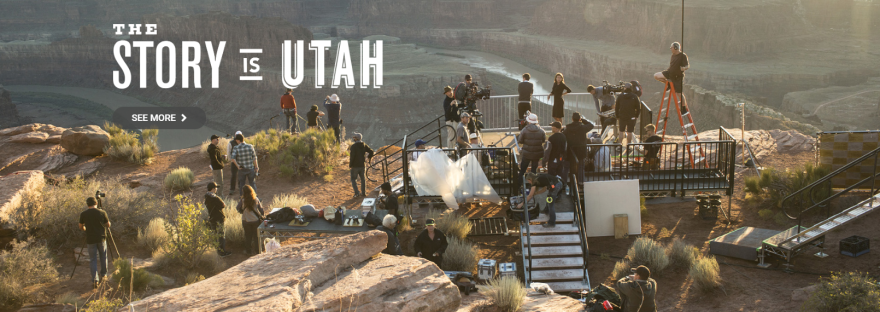The Director of the Utah Film Commission, Virginia Pearce, is visiting local communities to talk about the economic benefit of film and TV productions—and the importance of a state incentive program to support them.
Pearce told the Summit County Council last week that the TV series “Yellowstone” brought tens of millions of dollars to Summit County. But with funds from the state drying up, that production and others have left Utah.
Pearce told the council that three seasons of “Yellowstone,” based out of the Utah Film Studios at Quinn’s Junction, resulted in $88 million spent in Summit County.
But she said that two years ago, the state began to lose productions due to a lack of incentive funds, as the demand for the money exceeded supply. She said that in 2020, the state saw nearly $500 million in lost opportunities.
Reviewing some recent history, Pearce said Utah prospered in the late 1990s into the new century, with TV productions like “Everwood” and “Touched By An Angel.” But at the same time, Canada developed an incentive program, followed by states such as Louisiana.
Utah dropped to a low point by the mid-2000s. In 2011, the state legislature approved the program that now exists, with nearly $6.8 million in tax credits and a cash rebate of over $1.4 million.
After 2015, the soap opera “Blood and Oil” became the first major production at the Utah Film Studios and helped to put the state on the map.
Pearce said the film commission was in an advantageous funding situation at that time.
“We have a rollover ability to roll over the funds, and we haven’t used funds in the last couple of years. So we were able to really use em and take advantage of that. And so now we’re in sort of an opposite situation where we don’t have enough funds to meet the demand. And so we’re starting to see productions go away, which is what happened when we lost ‘Yellowstone.’ It was a combination of, they would really love to be in Utah. They would rather be in Utah than in Montana. But the lack of incentives that we had, combined with Montana passing a program that allowed them to receive funds from their legislature, was really a combination that they couldn’t turn down.”
Under the state program, if a movie production spends $500,000 or more in Utah, it can receive 20 to 25 percent back as the tax credit or cash rebate.
“A production needs to apply first before they start production, and talk about how much they’re gonna spend and how many people they’re gonna hire. We have some requirements that you have to hire 75 percent cast and crew that are Utah locals. That’s the highest in the country. No one else has that kind of requirement. Or they can shoot 75 percent of their production days in rural Utah. So those are the two requirements of the program in order to get the 25 percent.”
County Council Member Roger Armstrong, who is an entertainment attorney in private life, said productions are getting more costly, whether they’re episodes of a streaming TV series or a mega-movie loaded with special effects. Those productions need the support of an incentive program.
“Not having an incentive for a state is simply disqualifying. I had a client a few years ago that had, was looking to do a television series here, and I had to negotiate two years worth of incentives just for him to commit to the state, in case it went, so we would have that. And that’s what ‘Yellowstone’ ran into. They had enough incentives to be able to shoot for three years here, and they tapped it out. There was nothing left. There was a deminimous amount left. Not enough to keep them here.”
Pearce said that states like California, New Mexico and Montana spend a lot on incentives. But Utah can still stay in the game, thanks to its proximity to Los Angeles, a supply of trained crew members and vendors and great locations.
Pearce was asked what the obstacles are to getting more funding.
She said a lot of the problem is misunderstanding.
“Some just think that we’re handing out money, that we’re handing out cash. It’s essentially a tax-credit program. We do have a small cash-rebate program but that works very similarly to the tax. Everything is post-performance. I think that people don’t feel like there’s a benefit to paying. Like, why are we paying out in film. We don’t pay incentives for other industries.”
Virginia Pearce, Director of the Utah Film Commission.





